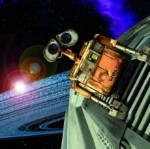2D or not 2D?

The state of traditional animation in today’s world of entertainment is not exactly a pretty picture. In Pixar’s new feature-length film, Wall-E, robots aid in human tasks, which ironically parallels animation’s struggle to survive advances in film technology.
When Pixar took over the creative team at Disney in 2006, a move made by Disney to help restore its animation program, animators began to see their computerized future. Soon after the agreement, 300 members of the Disney animation staff were laid off or resigned, according to CBC News.
The two companies were to remain separate in their creative endeavors, with Pixar having the last word. “At Disney you have these remarkable artists – they were not kneaded together in the right way,” said Edwin Catmull, president of Disney Animation and Pixar Animation Studios, to the New York Times.
Disney has made several attempts to keep hand-drawn animation alive, the last being the 2004 release of Home on the Range. The next is The Princess and the Frog, scheduled for release in 2009.
While efforts are being made to keep this dying art alive, Pixar firmly believes that computer animation is staying put, though Catmull said he has no plans to commit the studios to one type of animation.
“We always believed that quality is the best business plan,” he said.
Catmull’s Pixar team made sure not to sacrifice quality in Wall-E. One aspect of hand-drawn animation that Pixar’s computer animation had yet to tackle was portraying realistic human qualities. Andrew Stanton, writer and director of Wall-E and veteran Pixar animator, succeeded in capturing this in a completely non-human character.
“Always the goal was to have this machine who had a personality,” Stanton said. “We loved the loneliness of that character and the futility of a character that didn’t know it could just stop doing what is does. Would it ever question its existence like people do in normal life?”
Computer animation, or 3D as it’s referred to in the animation world, is generally fueled by comedy. Wall-E is an exception because there is a feeling of seriousness driving the plot that did not appear in previous Pixar films.
Achieving these realistic elements with the look of the film was essential to making Wall-E and the other characters believable.
“We didn’t want to do it just to wow people, but to get you really invested in the story,” Stanton said.
Stanton further emphasized the humanistic aspects of the film and the transition from human to computer animation by using real actors to represent scenes from the past and computer graphics to symbolize the future.
Although computer-generated animation appears to be taking over the business, it has yet to branch out from American-made, feature-length films. Animated television shows, such as The Simpsons, Futurama and Family Guy, remain hand-drawn favorites. Anime-Japanese animated cartoons-are characterized by their realistic hand-drawings. Attempts to include computer graphics in this style of animation have yet to live up to the standards appreciated by long-term fans.
While both methods of animation have support, when considering both feature-length films and television shows, neither one has yet outshined the other.





